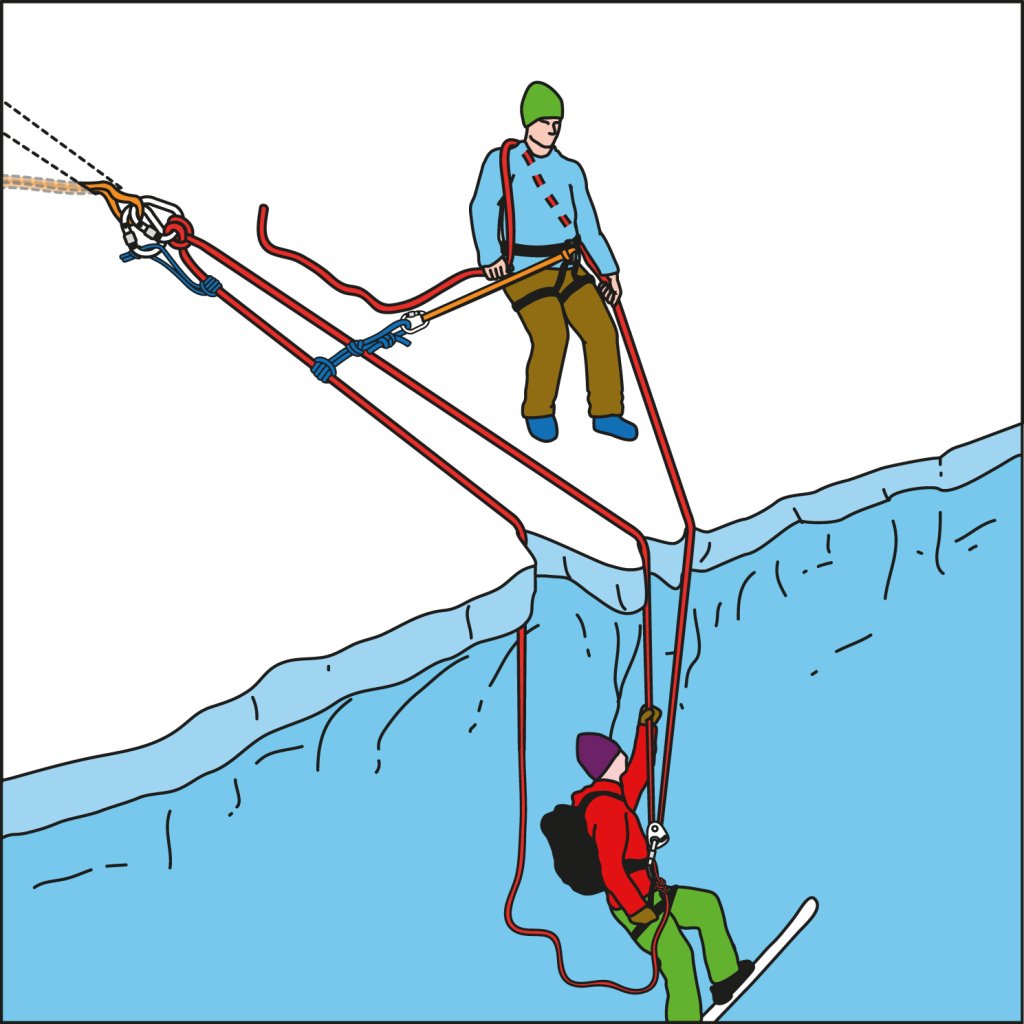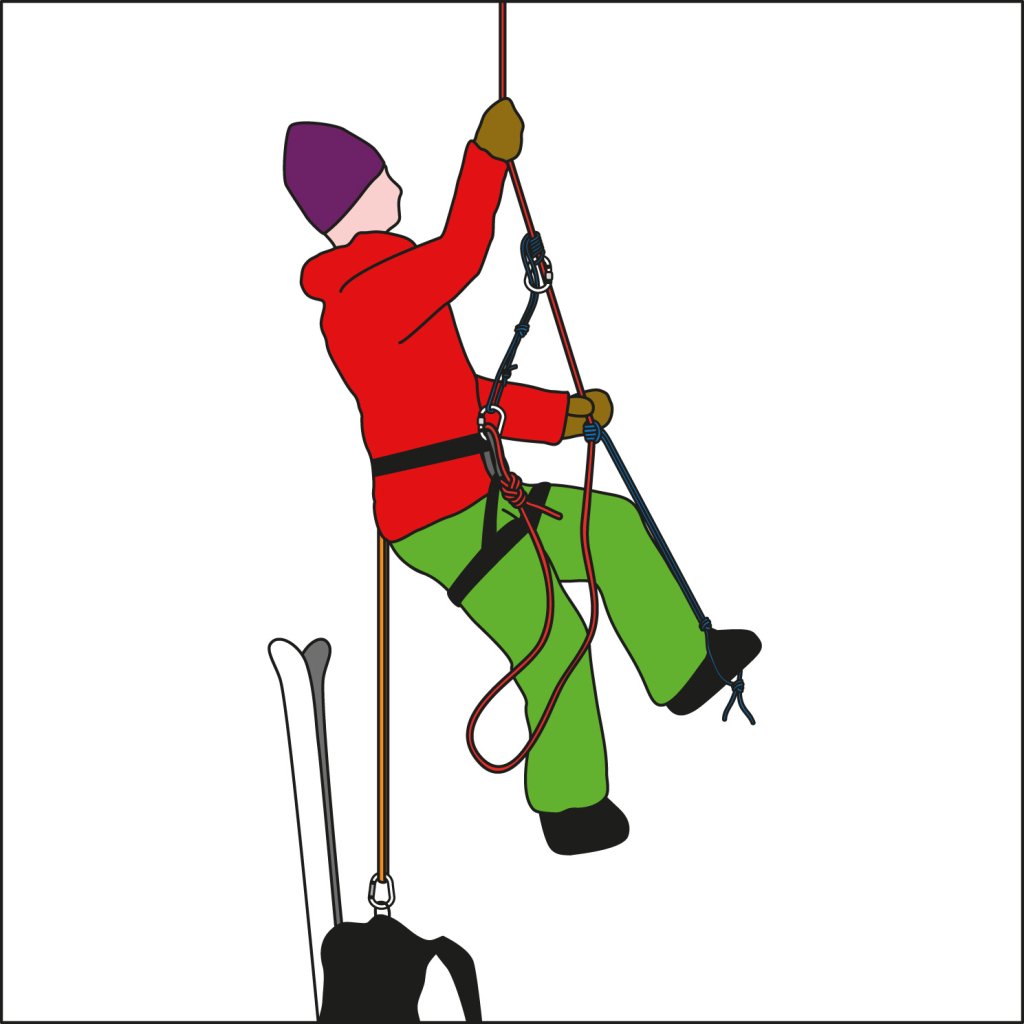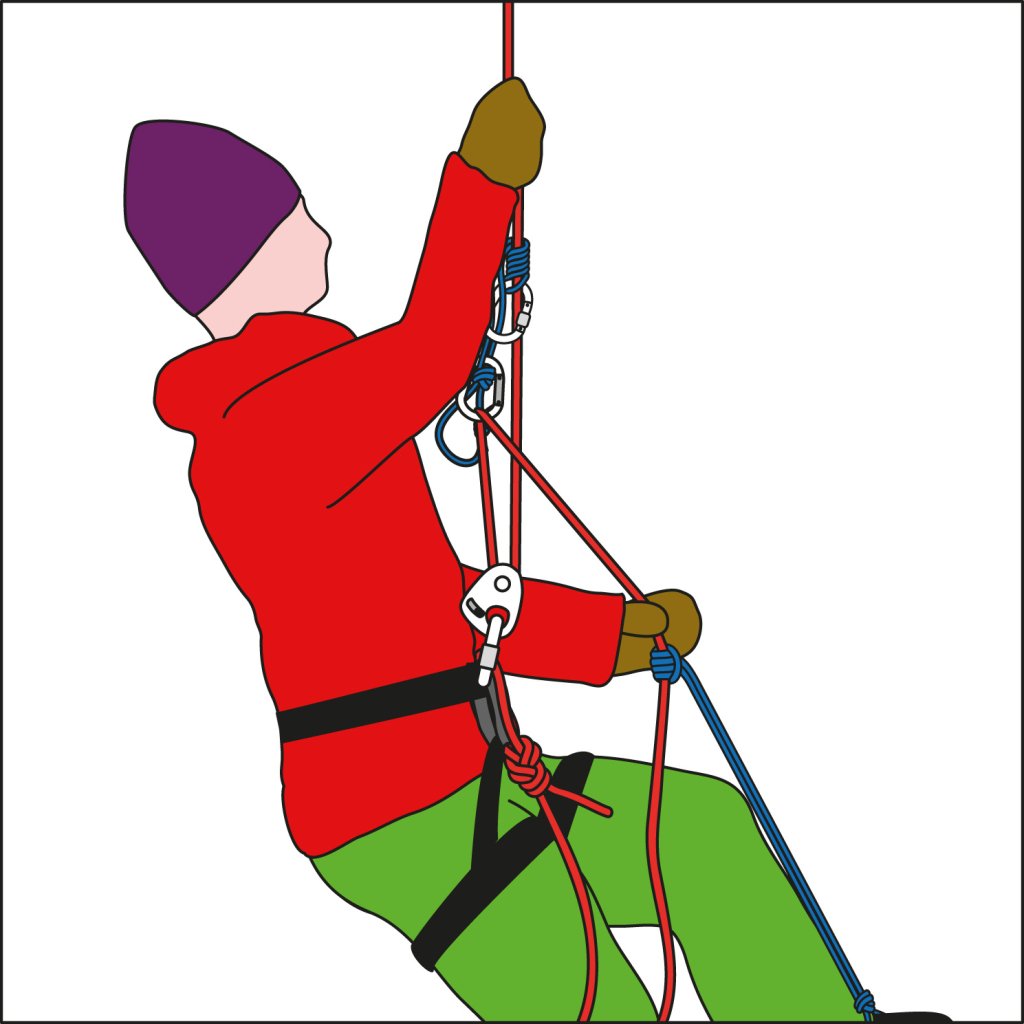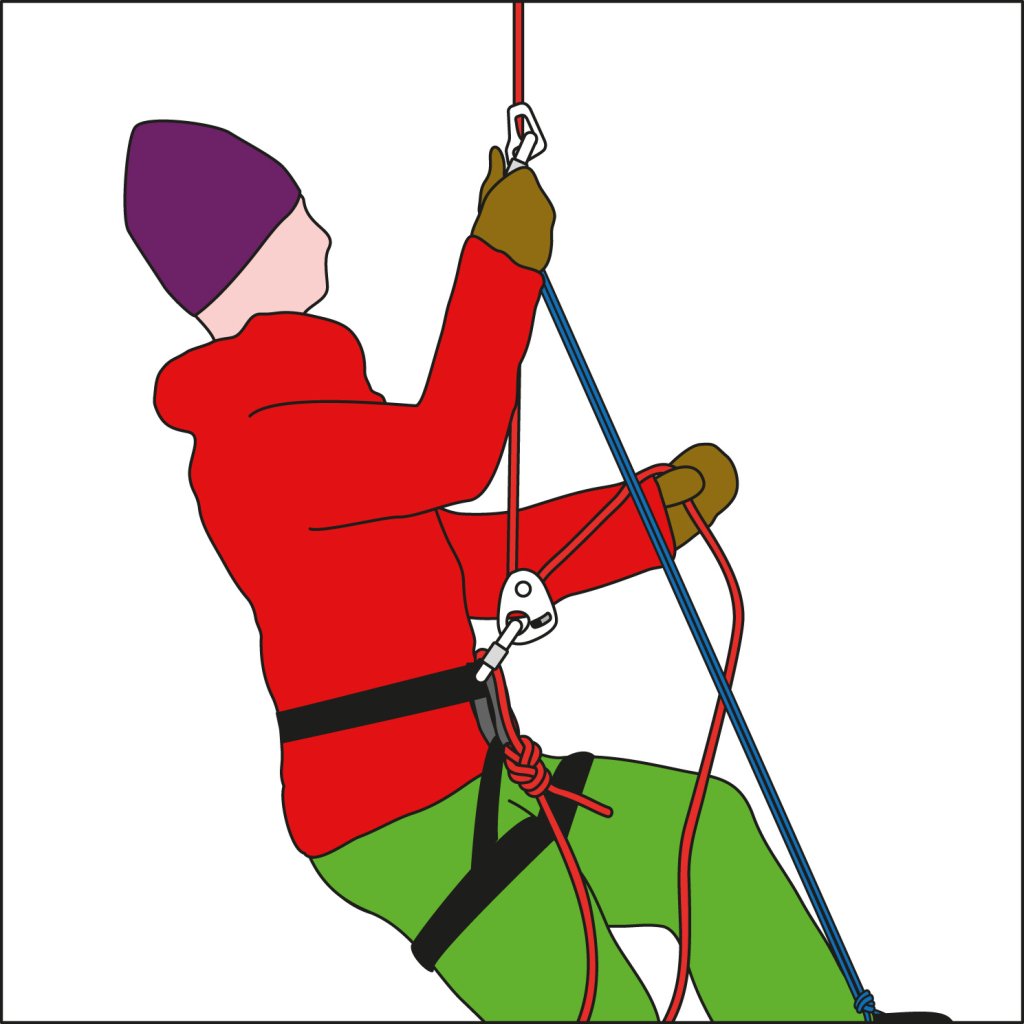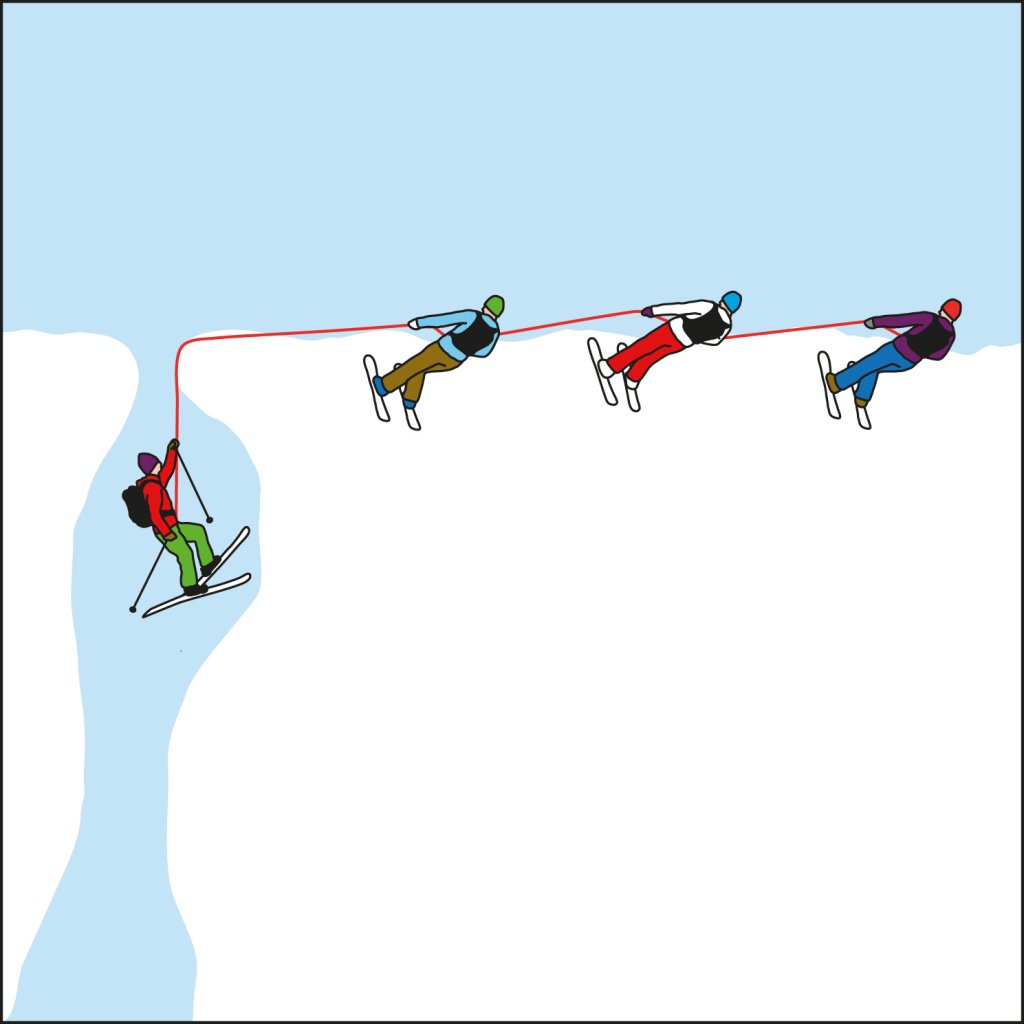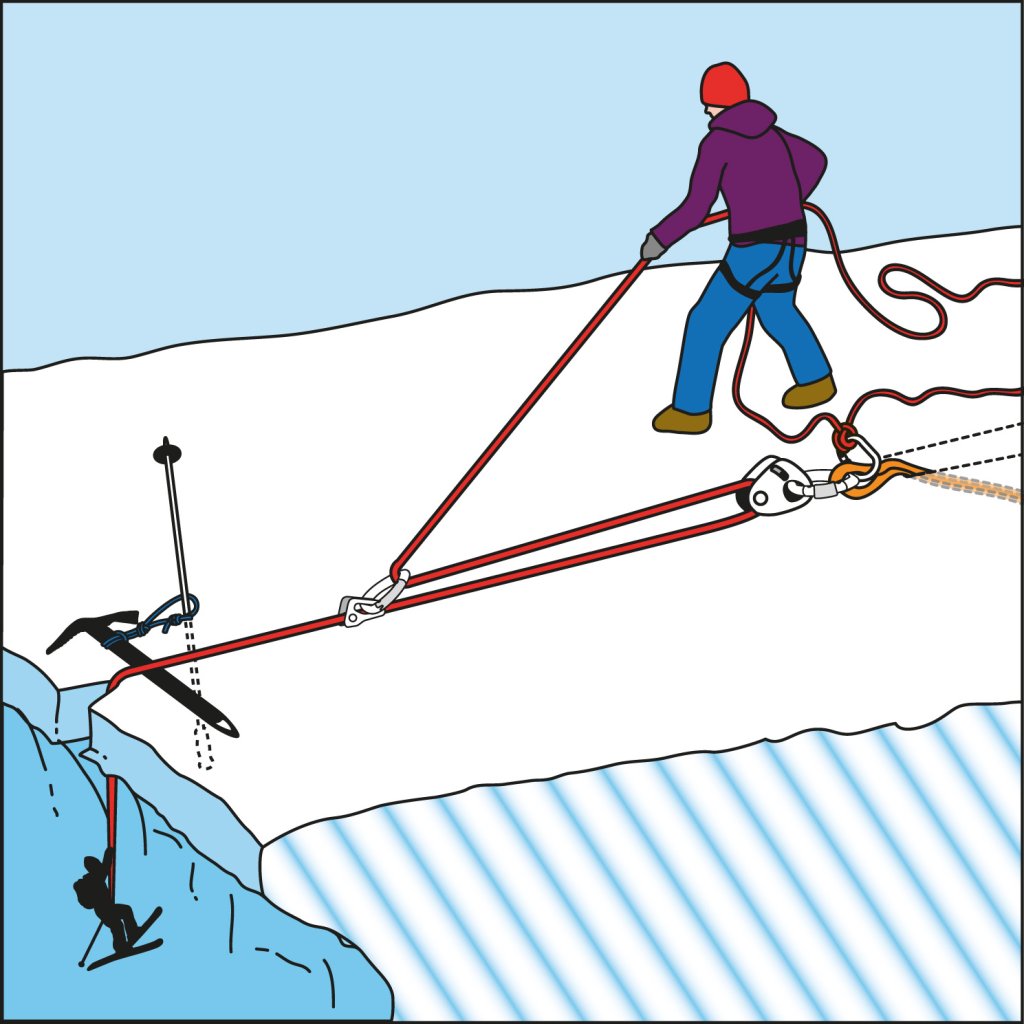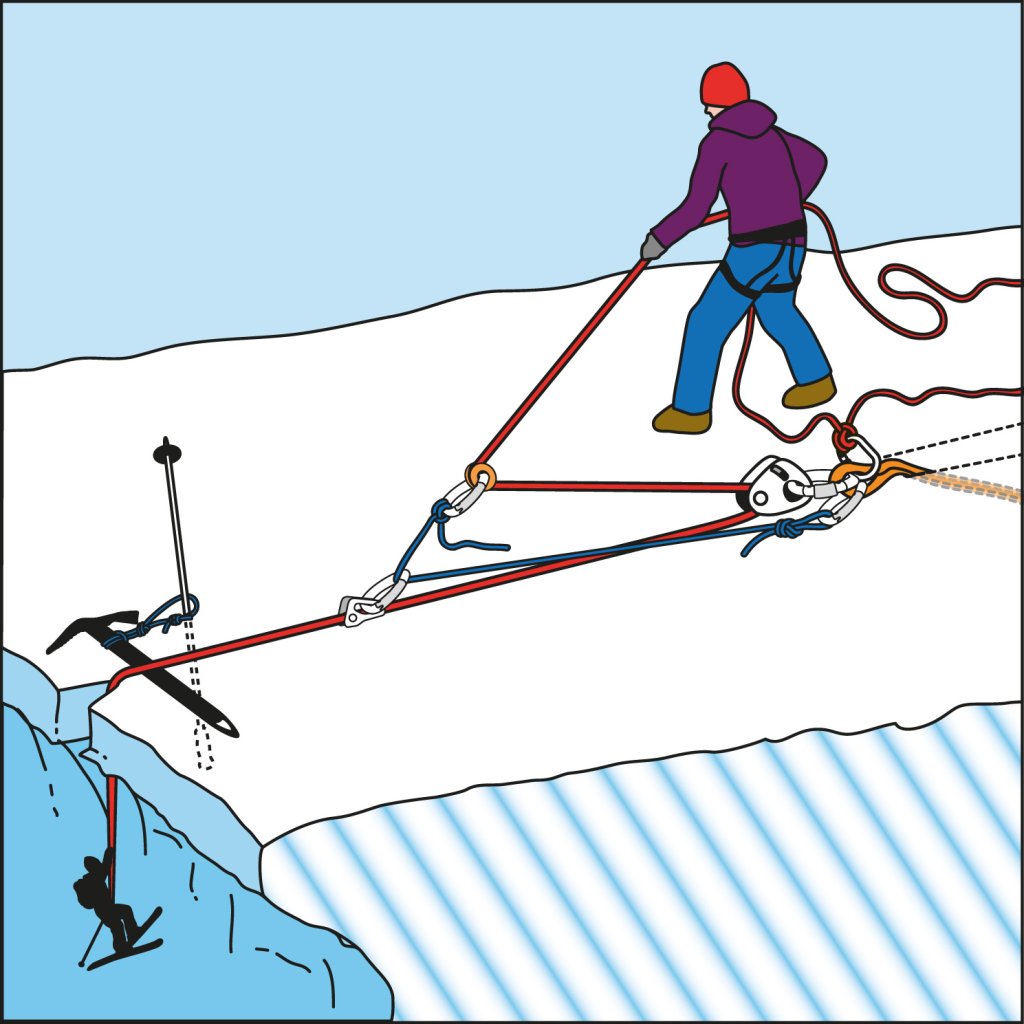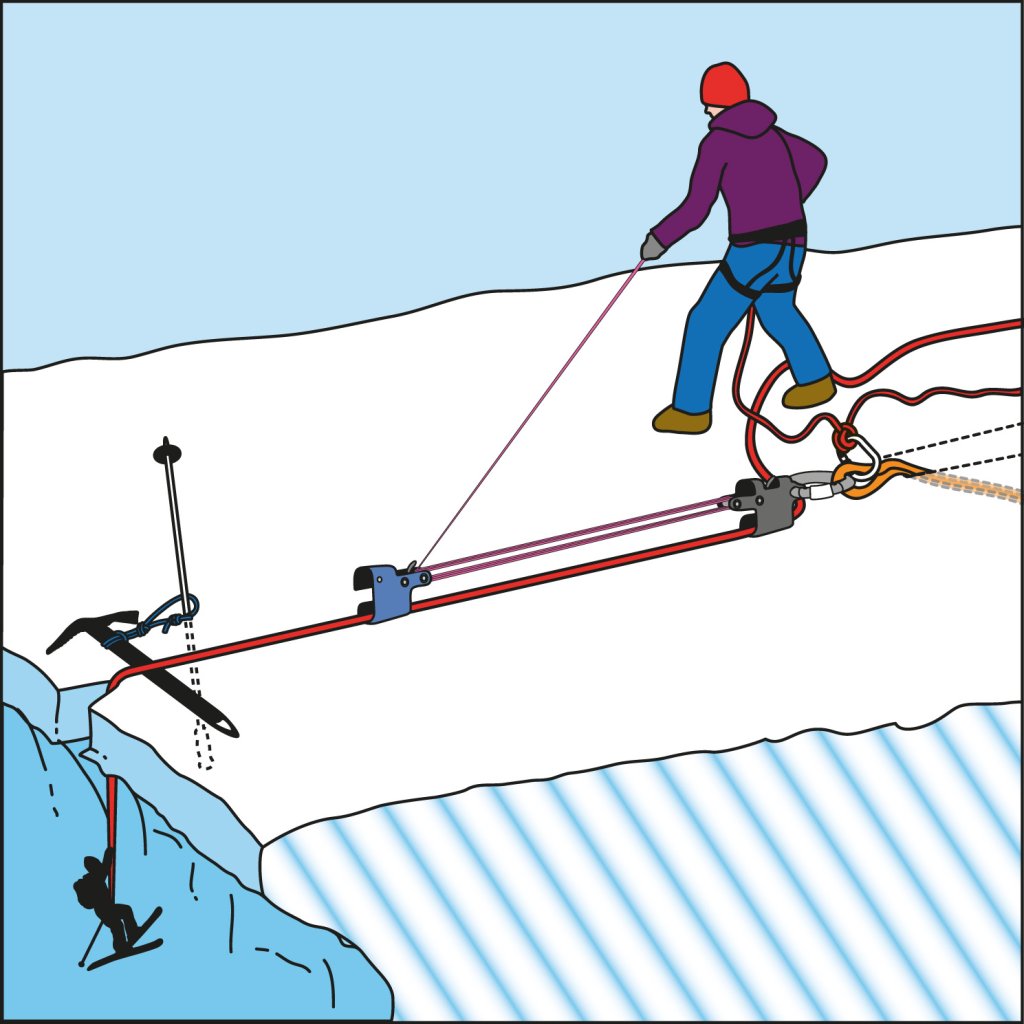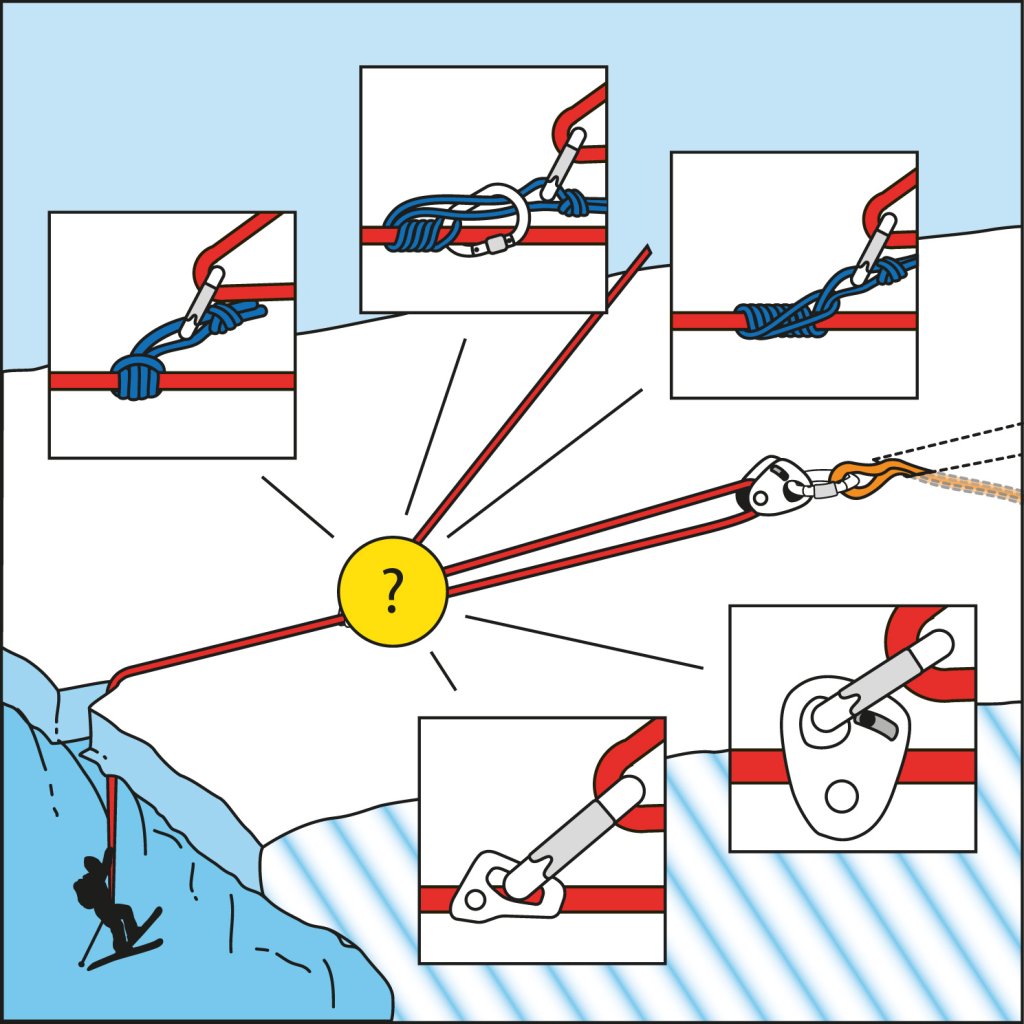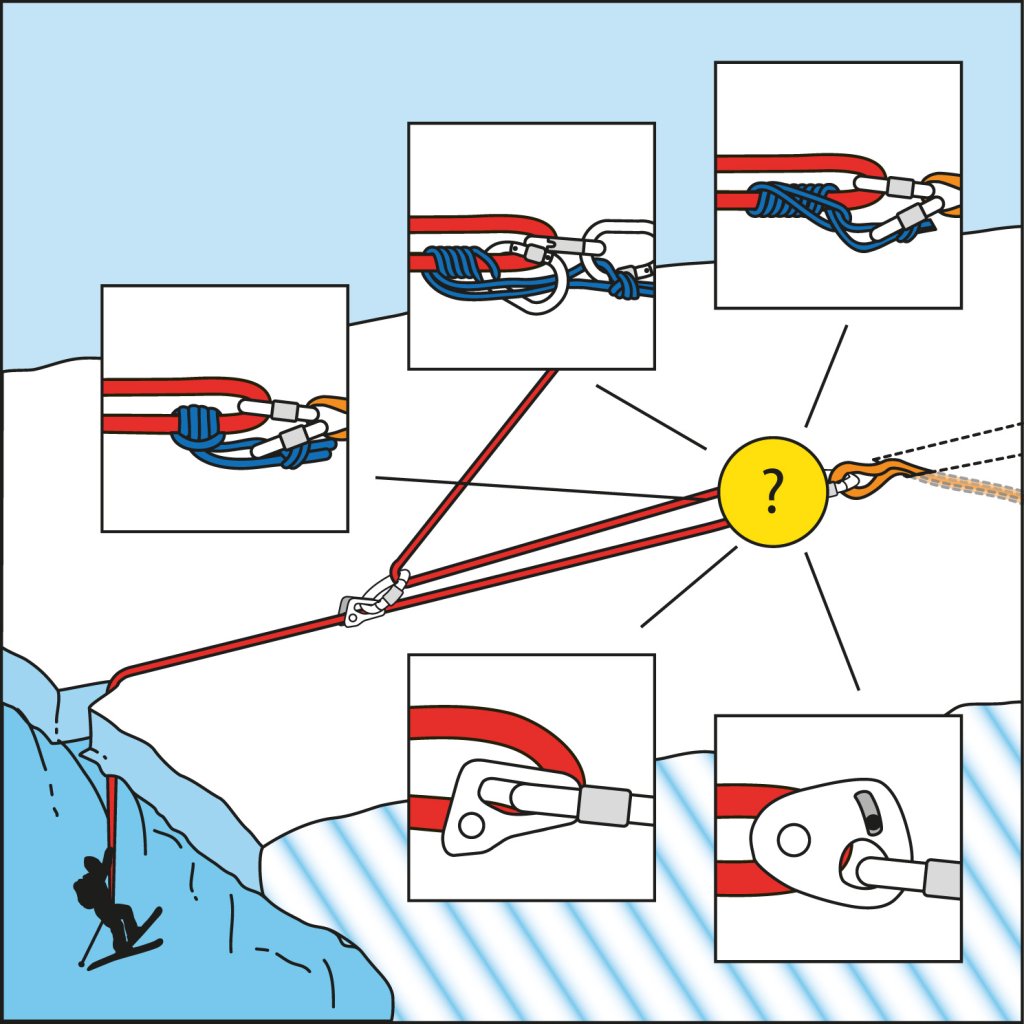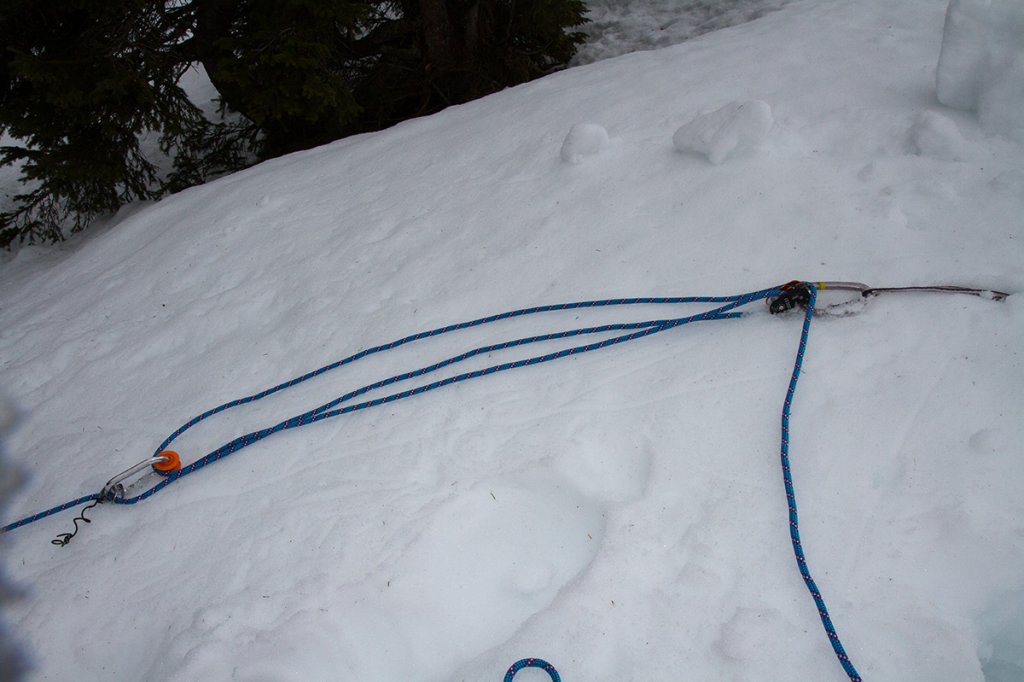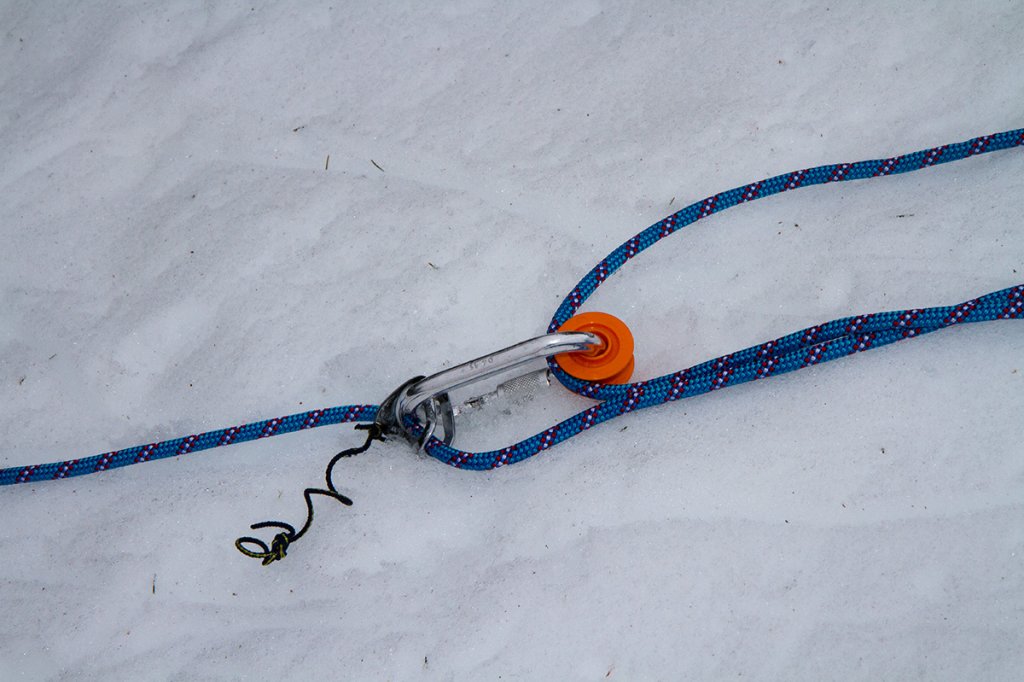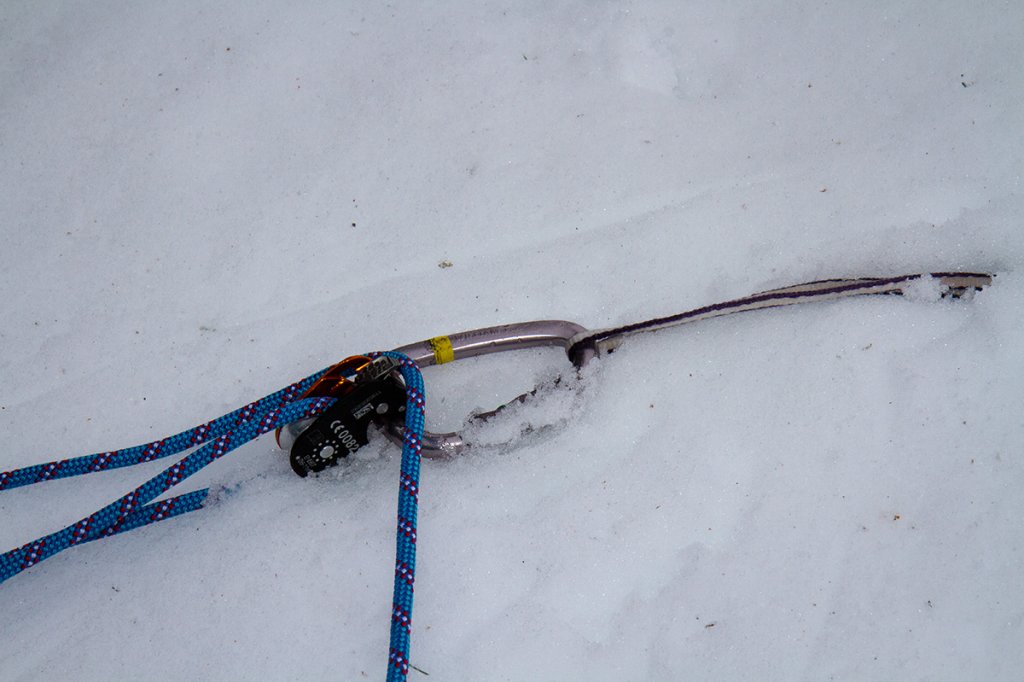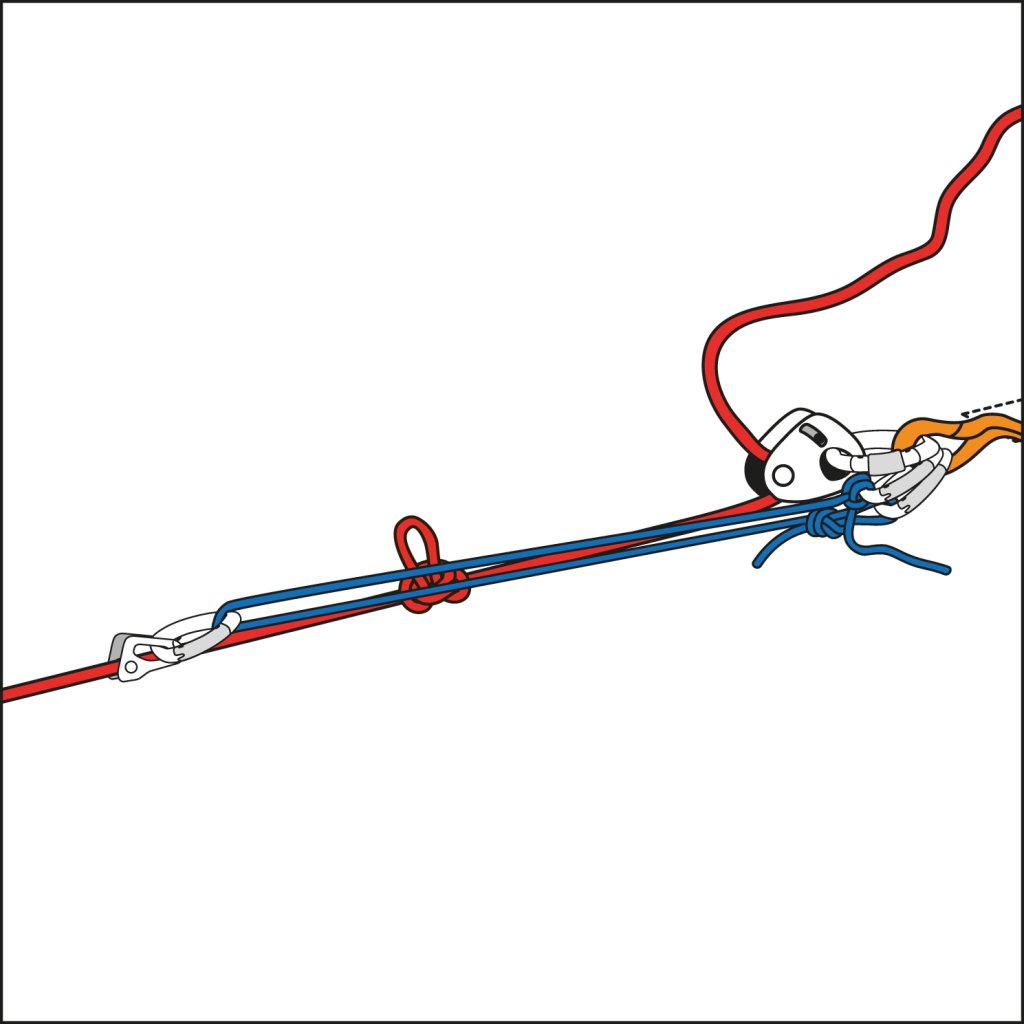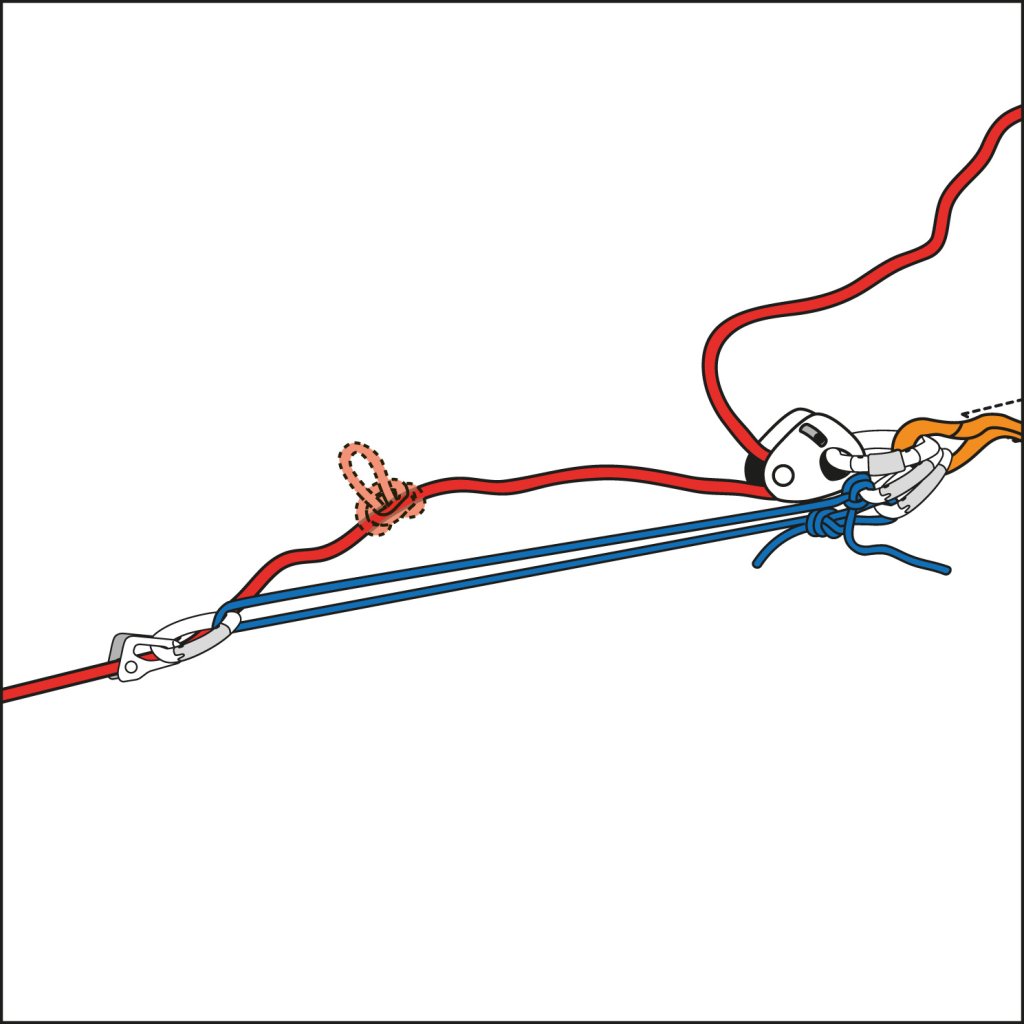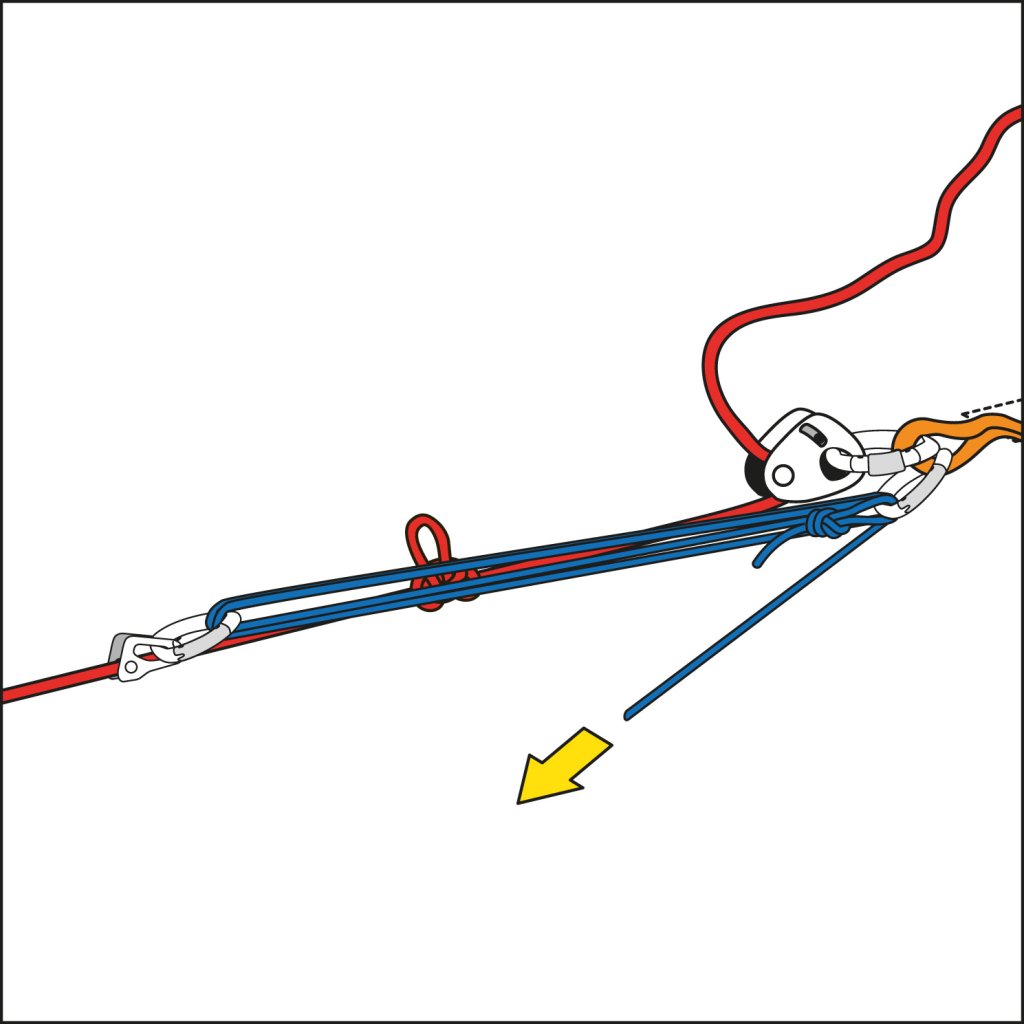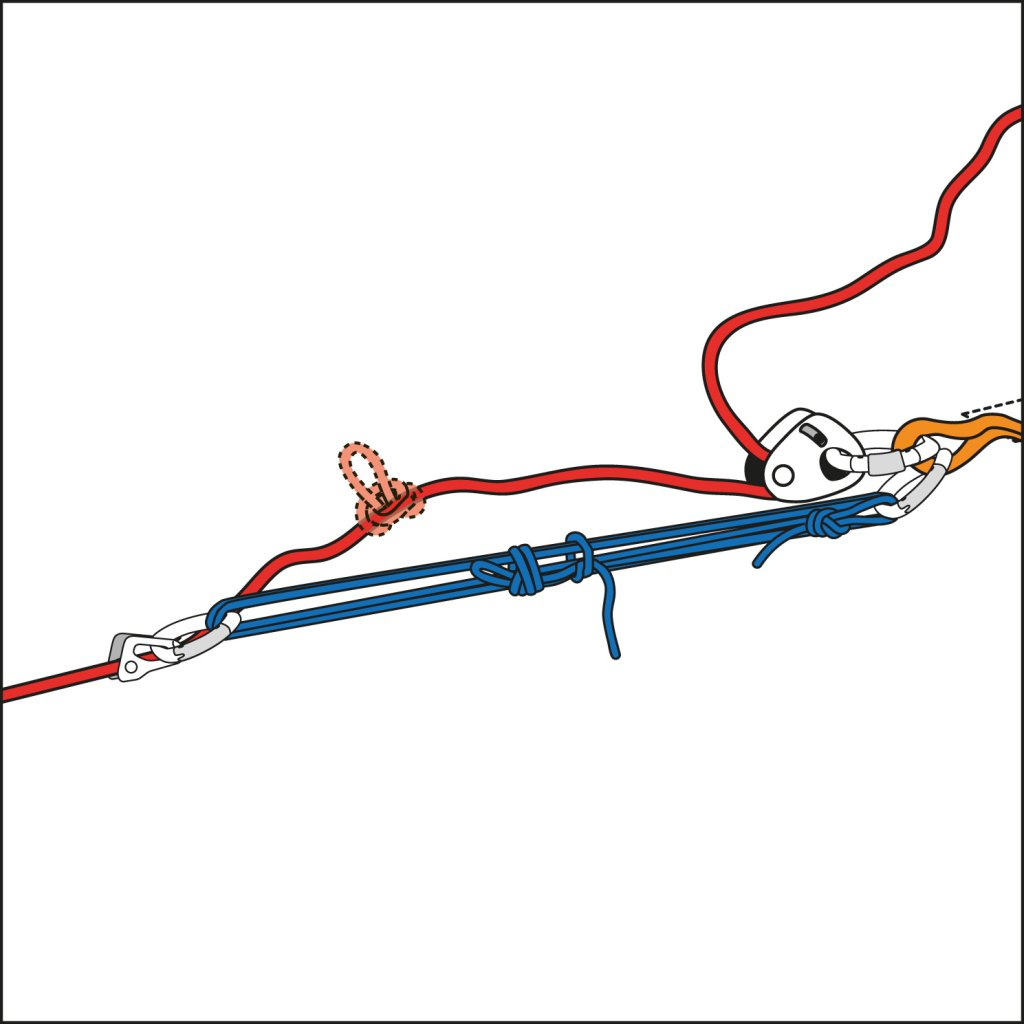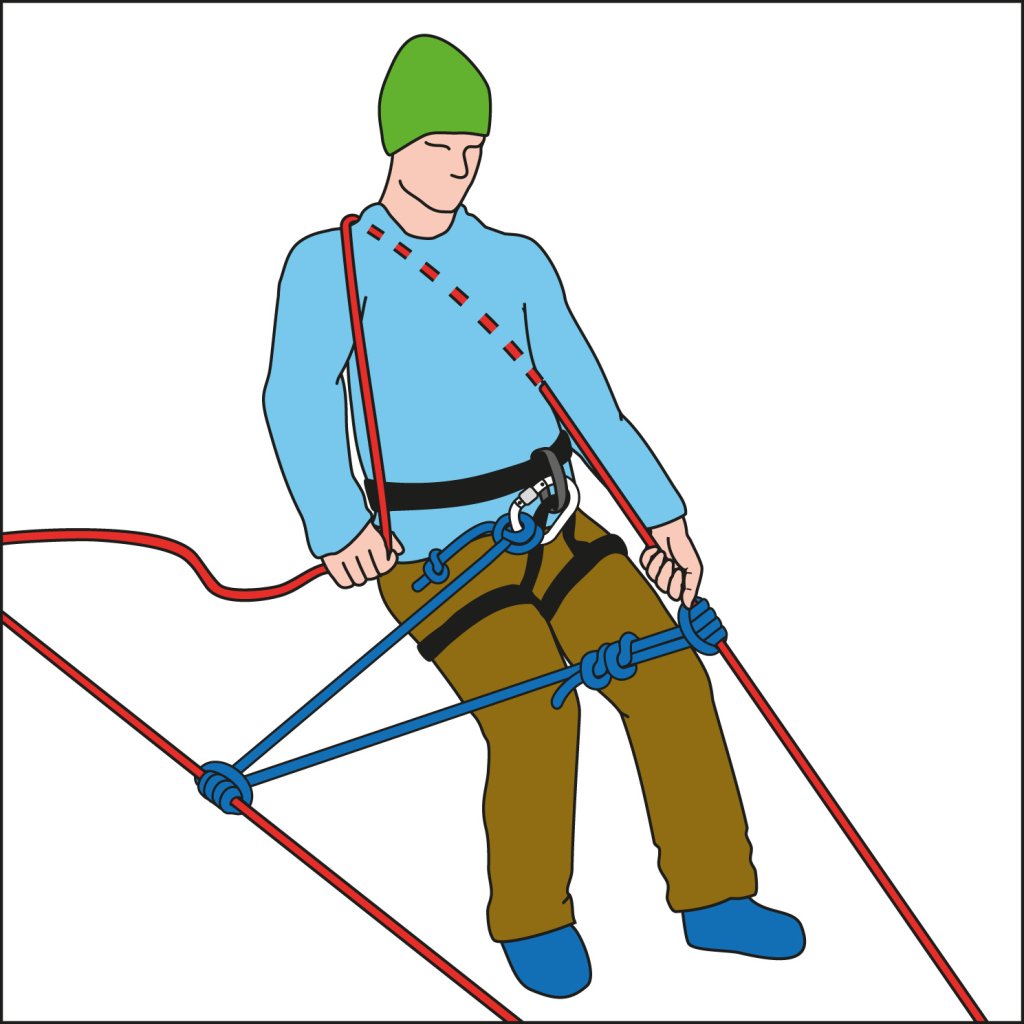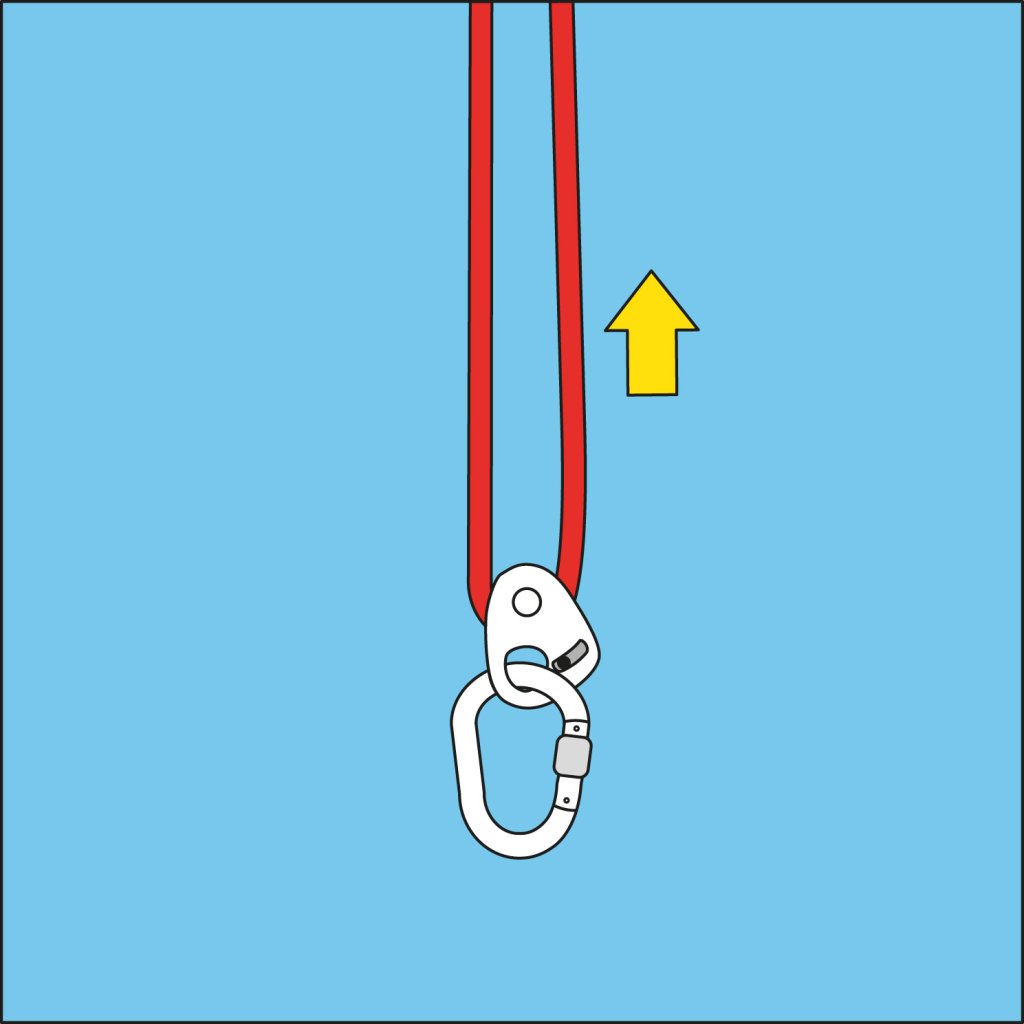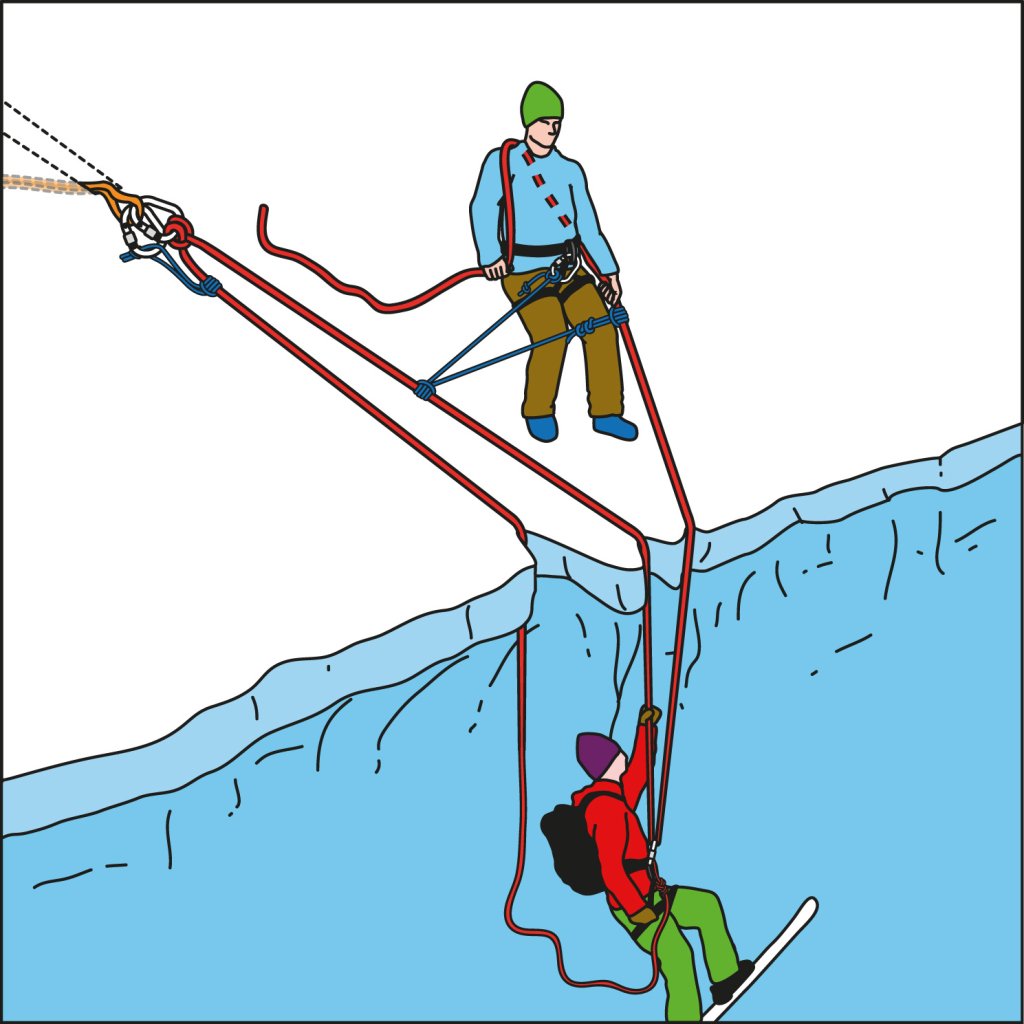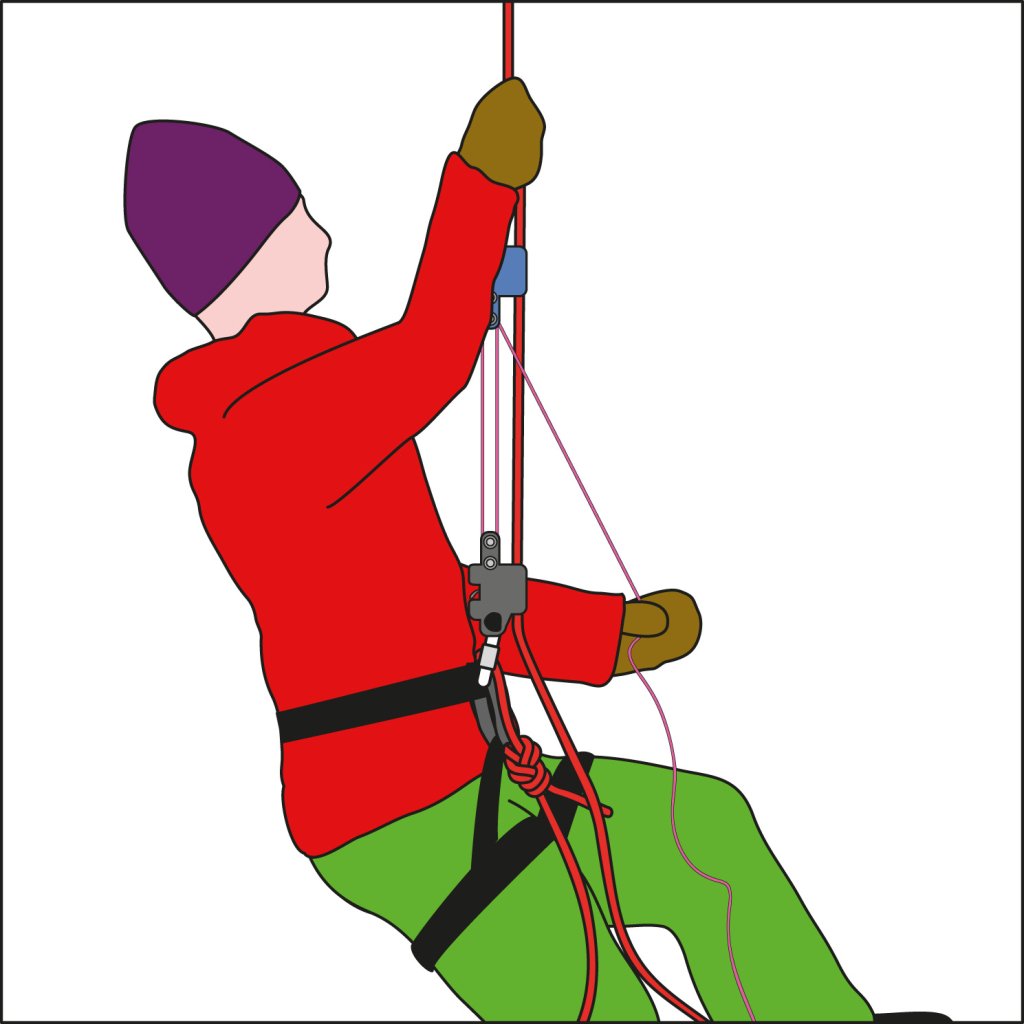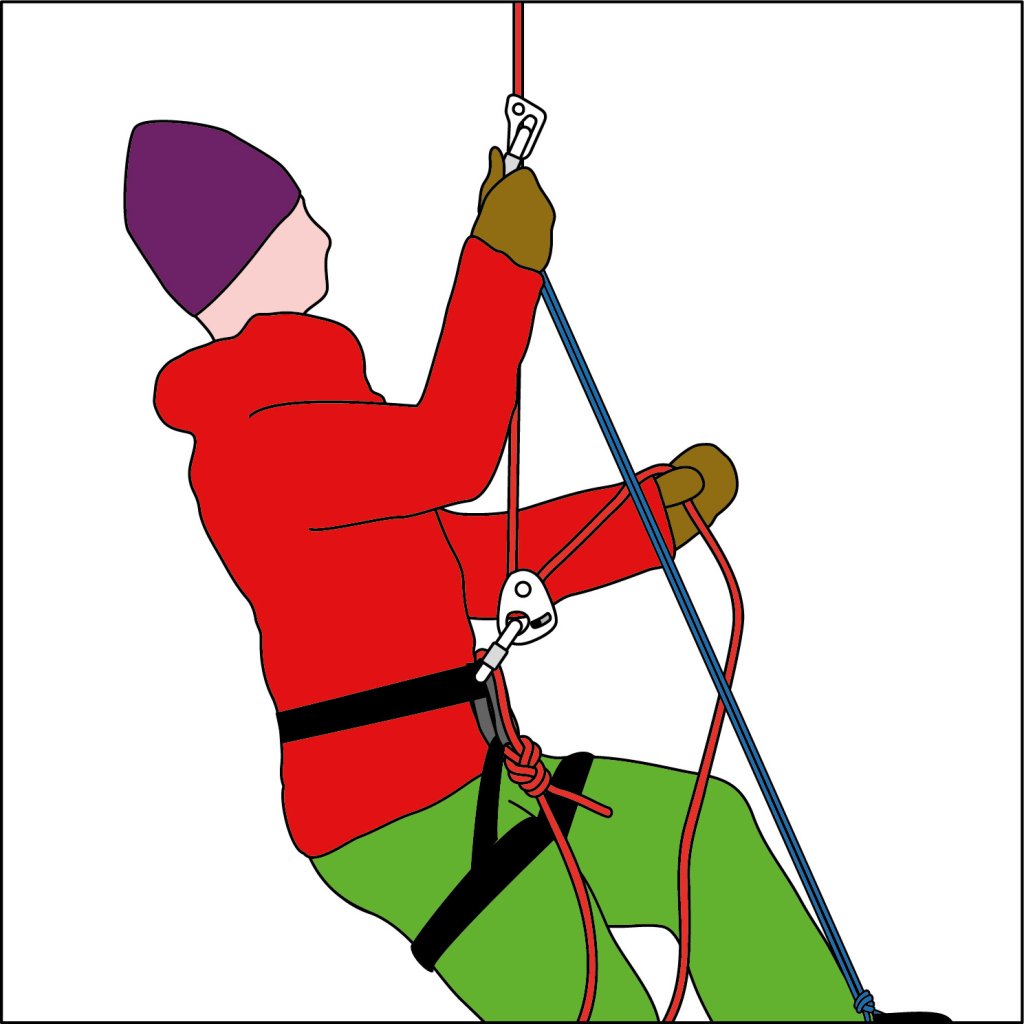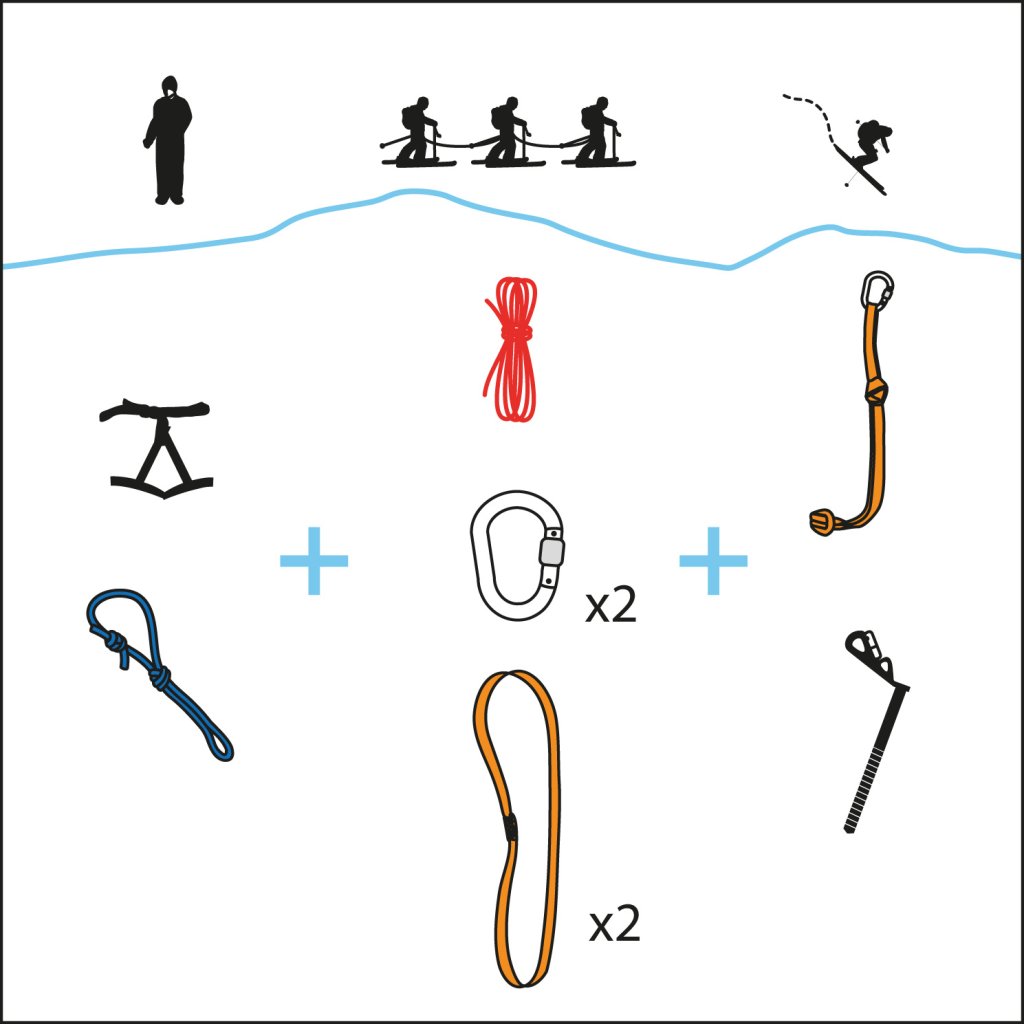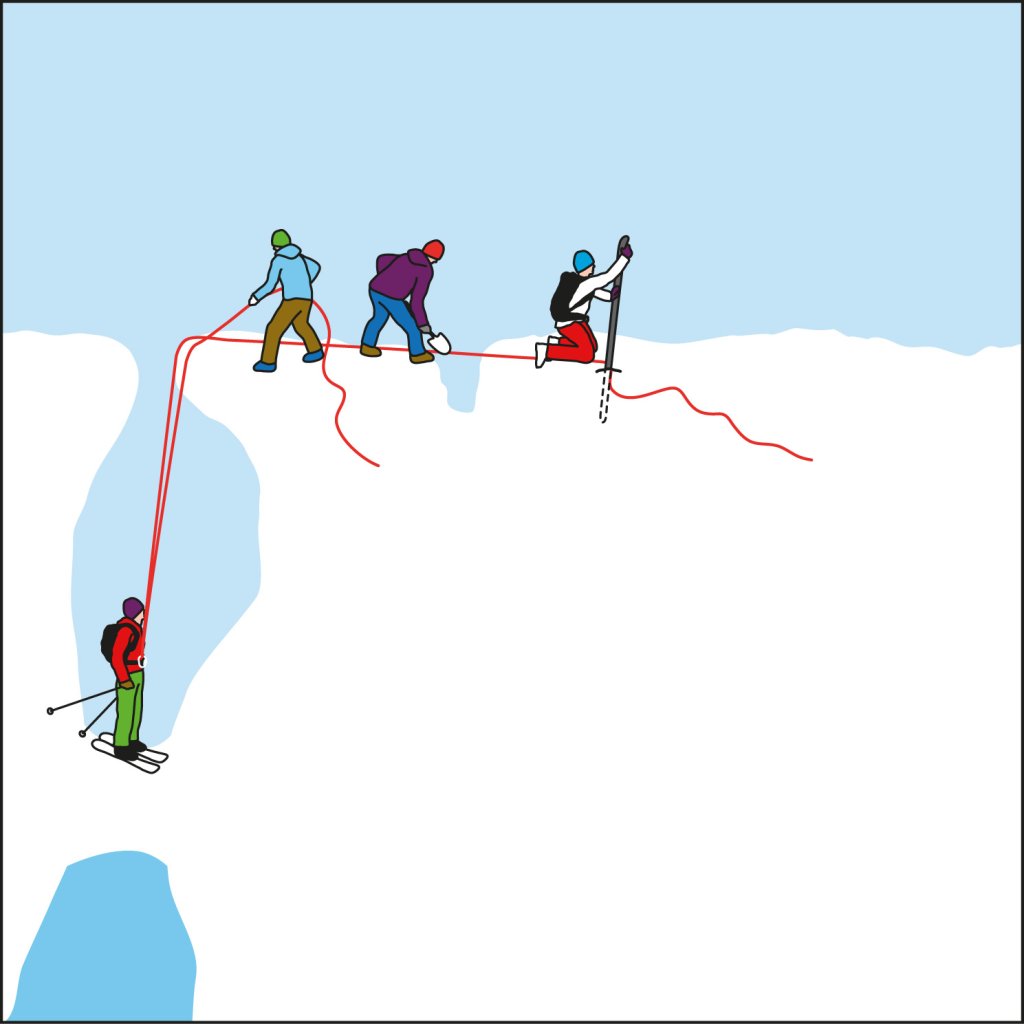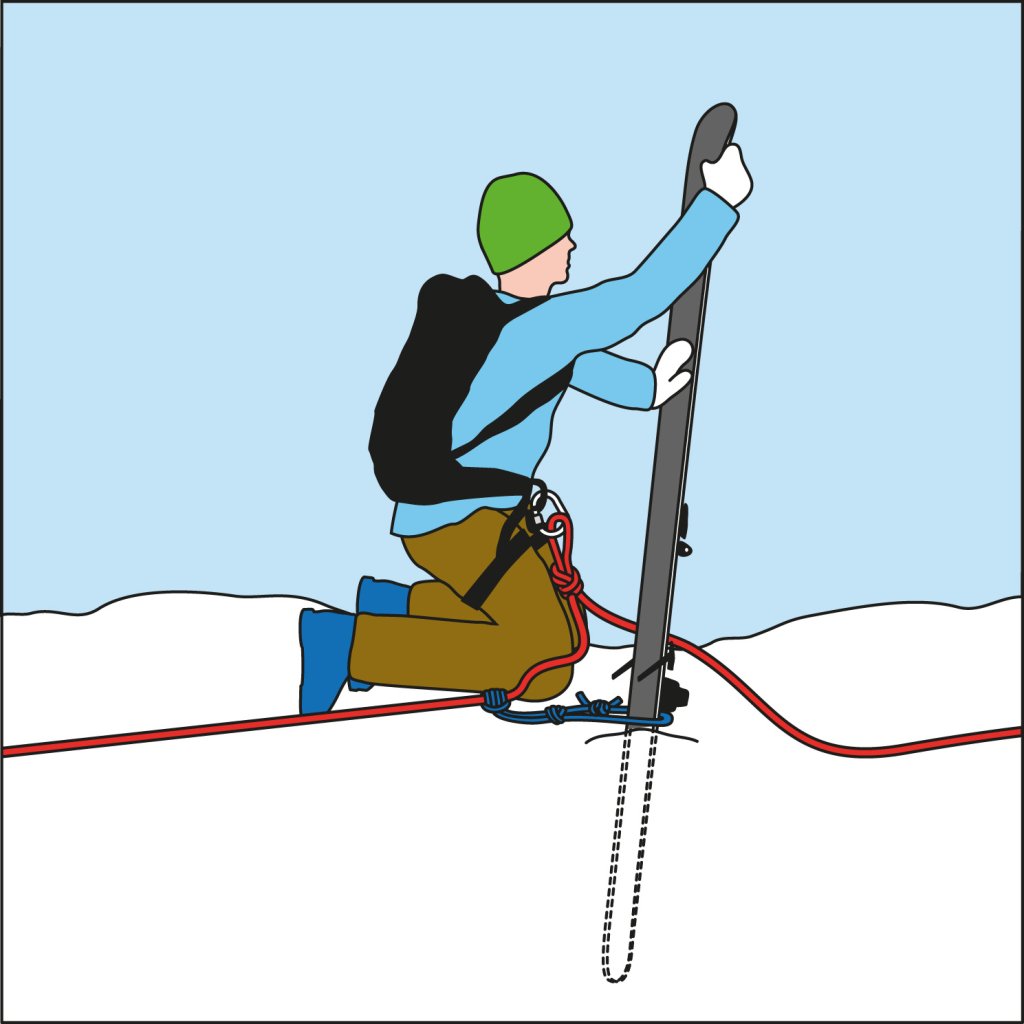Crack rescue is one of the topics that most tourers, ski mountaineers and freeriders find very complex. However, the basic principles are actually quite simple and the tools are not rocket science either. Once you have understood both, you are actually equipped for all situations on the glacier. Today, we would like to introduce you to the various methods of rescue.
This part of crevasse rescue is the one that most instructional publications focus on - if they deal with the other areas at all. And even then, only the pulley systems are usually explained. It is so well structured and therefore easy to explain in a book. But here too, with knowledge, brains, experience and the necessary self-confidence to make useful decisions in stressful situations, you can react much more flexibly and adapted to the situation than if you only have the "F" scheme in your head. This is why the current section is called "Recovery methods" and not "Pulley block". The reason for this should become clear from the first rescue method.
Sliding out
It may not be the most likely scenario, but it is not so impossible that it should not be mentioned. Particularly at the edge of a glacier, it is possible that the crevasse in which the fallen person is located has a solid, load-bearing floor and reaches the glacier surface somewhere, at least to the extent that it is possible to climb out - possibly with the help of companions from above. As a rule, not only the person who has fallen, but also the other rope team members should remain secured to the rope. It is also only advisable to continue in the crevasse if the floor of the crevasse is really stable beyond doubt, i.e. consists of solid ice or old snow that is several years old, or if the crevasse is so narrow that a deeper fall can be ruled out. Deeper snow bridges in the crevasse can be particularly treacherous. Probing the ground with an avalanche probe is also an option.
